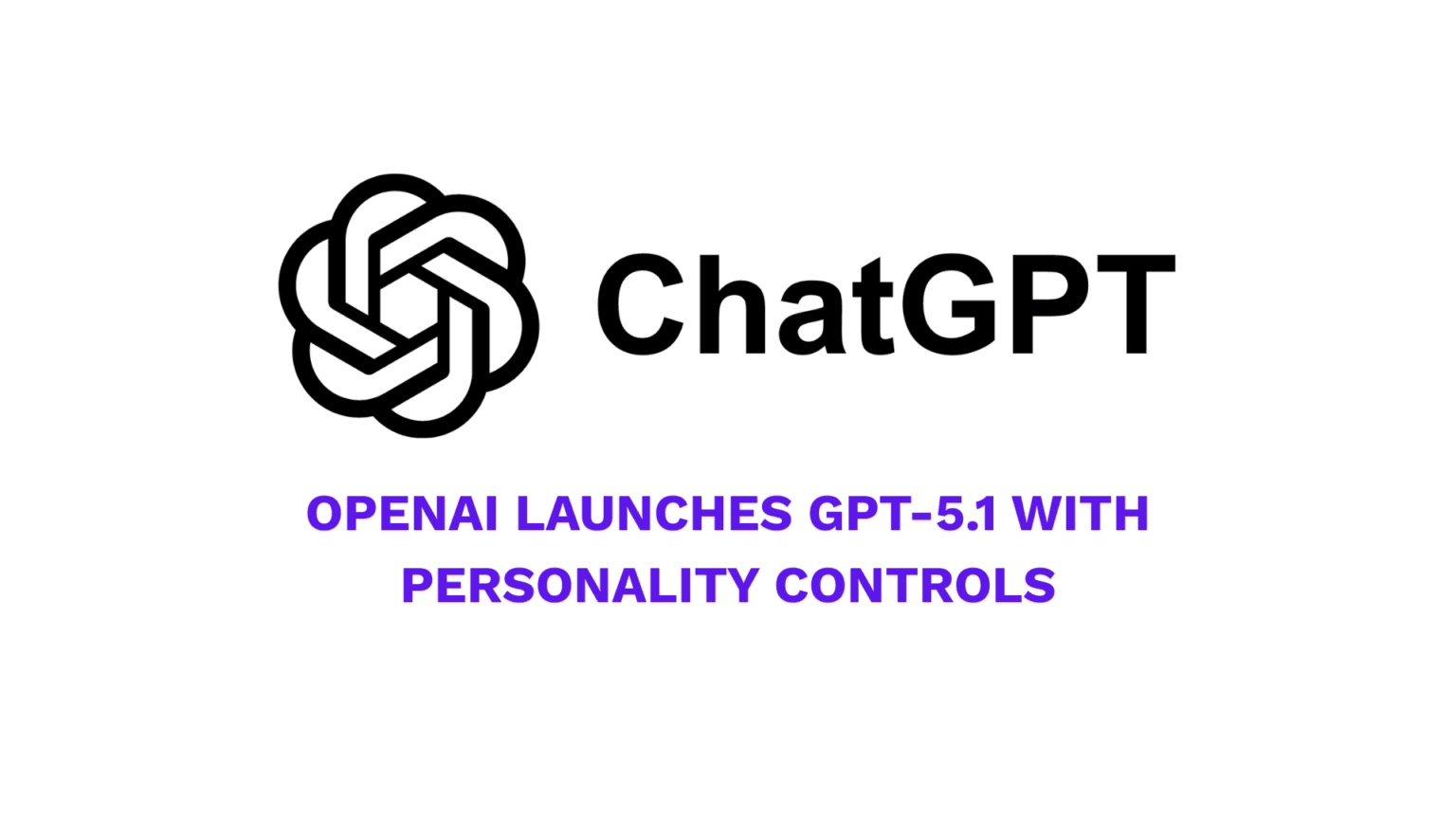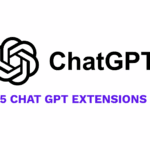OpenAI just dropped GPT-5.1, and honestly it feels like they finally listened to what people actually wanted from their AI. The new update rolled out on November 12, 2025, and it is basically GPT-5 but with personality, better conversational skills, and controls that let you shape how ChatGPT talks to you. Whether you are a content creator, developer, student, or just someone who chats with AI daily, this update brings some genuinely useful improvements. Let us dig into what changed and whether this new version actually matters for you.
What Happened with GPT-5.1
OpenAI released two versions of the upgraded model: GPT-5.1 Instant and GPT-5.1 Thinking. Both are significantly smarter than their predecessors, but they take different approaches to how they work.
GPT-5.1 Instant is the most used model on ChatGPT. It is now warmer by default, more conversational, and honestly feels less robotic. OpenAI’s internal testing shows that people are genuinely surprised by how playful it has become while still remaining clear and useful. This is the model most users interact with daily, so the change is pretty noticeable.
GPT-5.1 Thinking is the advanced reasoning model that handles complex problems. The big improvement here is adaptive reasoning. Instead of always thinking for the same amount of time, it now adapts based on what you are asking. Simple questions get answered faster, while complex problems get more thinking time. The responses are also clearer, with less jargon and fewer technical terms that nobody understands anyway.
Both versions ship with a warmer, more empathetic tone as the default. This is a direct response to feedback OpenAI received about GPT-5 feeling too cold and corporate when it launched just three months ago.
Why It Matters
Here is the thing that actually matters: AI that is both smart and enjoyable to talk to is rare. Most AI tools are either overly helpful in a creepy way or super clinical and boring. GPT-5.1 tries to bridge that gap.
For content creators, this means ChatGPT can now help you brainstorm, edit, and refine content in a way that feels more natural and less like a template. For students, the explanations are clearer and less intimidating. For developers building AI applications, the API versions bring adaptive reasoning to your code, which means smarter responses without burning through expensive tokens on simple questions.
The personality controls are the real game changer though. Different situations need different tones. Sometimes you need professional and direct. Other times you need something warmer and more casual. This update finally gives users control over that.
Key Details About GPT-5.1 Features
OpenAI is giving you six new personality presets alongside the existing options. You now have:
Default is the new warm and conversational baseline. Friendly (formerly called Listener) is exactly what it sounds like, warm and supportive. Efficient (formerly Robot) is direct and to the point. Professional is polished and business ready. Candid is honest and straightforward without sugar coating anything. Quirky brings some personality and playfulness into responses.
On top of the presets, OpenAI is also testing granular controls. Users can now adjust how concise, warm or scannable responses are. You can even control how frequently ChatGPT uses emojis. These fine tuned controls are rolling out gradually starting this week.
The other big feature is immediate updates across all chats. Previously, if you changed your tone or style preferences, it only applied to new conversations. Now your preferences update instantly, even for conversations that are already happening. That is surprisingly useful if you change your mind mid conversation.
GPT-5.1 is also much better at following custom instructions. If you set specific guidelines for how you want responses formatted, the model respects them way more reliably now.
On the technical side, GPT-5.1 Thinking uses adaptive reasoning. The model now spends more time on complex problems and less time on simple ones. This is not magic, but it is genuinely efficient. OpenAI claims this delivers better results on challenging tasks while reducing waiting time on straightforward questions.
Availability rolled out starting November 12. Paid users (Pro, Plus, Go, Business plans) got access first. Free and signed out users are coming next. Enterprise and Edu plan users get a seven day early access toggle to compare before the switch is permanent.
First Impressions and What People Are Saying
The initial response from users has been genuinely positive, which is honestly refreshing. People were worried after GPT-5 launched with that cold, corporate tone, but GPT-5.1 feels like OpenAI actually heard the feedback and fixed it.
Developers are excited about adaptive reasoning, because it means smarter API responses without the token burn. Content teams are already seeing how much more natural the writing feels. One thing that surprised people though is how this feels less like talking to a calculator and more like talking to someone who actually understands context.
There is also appreciation for the personality options. The Quirky mode is apparently hilarious in the right moments. Professional mode is solid for work contexts. The Candid option is great when you just want straight answers without the fluff.
Community reactions on social media and tech forums have been pretty enthusiastic. People genuinely feel like OpenAI is moving in the right direction after the lukewarm response to GPT-5.
Real World Impact on Different Users
Content creators are going to see the biggest difference. Writing assistance feels less like autocomplete and more like actually working with someone. The warmer tone means less editing is needed to make AI generated content feel human.
Students are getting clearer explanations. The reduced jargon in GPT-5.1 Thinking means complex concepts are more approachable. Mental health support features have been improved too, something that actually matters more than people realize.
Developers building AI applications benefit from more efficient token usage. Adaptive reasoning means your API bills might actually go down while response quality goes up. That is rare.
Business users who use ChatGPT for analysis and research get smarter, faster responses. The combination of improved intelligence and adaptive reasoning means better insights in less time.
Casual users just get a more enjoyable experience. AI that does not feel like a robot is actually nice to use for brainstorming, advice, or just having an interesting conversation.
Comparison with Previous Versions
GPT-5, which launched in August, was incredibly smart but honestly kind of cold. It felt like talking to a very intelligent accountant who was only interested in facts. Users complained about the tone and said it lacked personality.
GPT-5.1 is smarter than GPT-5 and actually warmer by default. The trade off OpenAI made is that some safety benchmarks show slight regressions in certain categories. Specifically, the model is slightly less filtered when it comes to certain sensitive content. OpenAI acknowledges this and says they are working on improvements.
Compared to GPT-4o (the previous generation before GPT-5), the improvement is night and day. GPT-5.1 performs significantly better on math, coding, and reasoning tasks. The reasoning is also way more efficient.
If you are using ChatGPT currently, switching to GPT-5.1 is a genuinely noticeable upgrade. The personality controls alone make the experience feel more personalized.
Concerns and What Users Should Know
There are a few things worth being aware of. First, OpenAI did mention that GPT-5.1 shows light regressions in certain safety benchmarks compared to earlier versions. Specifically, it is slightly more likely to generate content related to harassment, hate speech and sexual content compared to GPT-5. OpenAI says this is temporary and they are working on it.
The personality controls, while cool, might be overwhelming at first. Some users will love having that granular control over tone. Others might just want something that works out of the box without needing to tweak settings.
The warm and empathetic default tone is great, but some people prefer direct and clinical responses. That is why the Efficient mode exists, but not everyone is going to discover it.
One more thing: the adaptive reasoning in GPT-5.1 Thinking means response times are variable. Sometimes you get instant answers, sometimes it takes longer. That unpredictability, while usually good, might be annoying for some workflows.
What Comes Next
OpenAI said today is just the beginning. They are planning more improvements to personality controls and customization. Future updates will likely include even finer grained controls over how the model behaves and responds.
The company also committed to keeping GPT-5 available in a legacy dropdown for three months for paid subscribers. This gives people time to try GPT-5.1 and provide feedback before the old model is phased out.
API access to GPT-5.1 is coming later this week. Developers will get gpt-5.1-chat-latest for the Instant model and gpt-5.1 for the Thinking model. Both will support adaptive reasoning.
There is also a hint that GPT-5.1 Pro is coming soon, which will be an even more powerful version for people doing really complex work.
Final Thoughts
GPT-5.1 feels like a solid incremental upgrade that actually addresses real feedback from users. OpenAI listened when people said GPT-5 was cold, and they made it warmer while keeping it smart. The personality controls are genuinely useful and feel like a step toward more personalized AI.
Is this a massive breakthrough. Not really. Is this the kind of thoughtful improvement that makes daily AI use better. Absolutely yes.
For content creators, students, developers, and everyday ChatGPT users, the update is worth trying as soon as it rolls out to your account. The warmer tone is noticeable immediately, and the personality options let you dial in the exact experience you want.
The only real hesitation is those slight safety benchmark regressions, but OpenAI has acknowledged them and said they are working on fixes. Given that OpenAI processes hundreds of millions of queries weekly and has way more data than anyone else on this topic, trusting them to handle safety issues is reasonable.
Start with the default tone and try it out. If you want something different, explore the personality options. Within a few conversations, you will probably find a setup that feels right. That is what good AI product design looks like.
Checkout this new AI if you want to see how tools like Supermetrics are using advanced language models to automate data analysis and marketing intelligence.
For deeper access and to try GPT-5.1 yourself, head over to chat gpt where you can start using the new model with your paid subscription today






